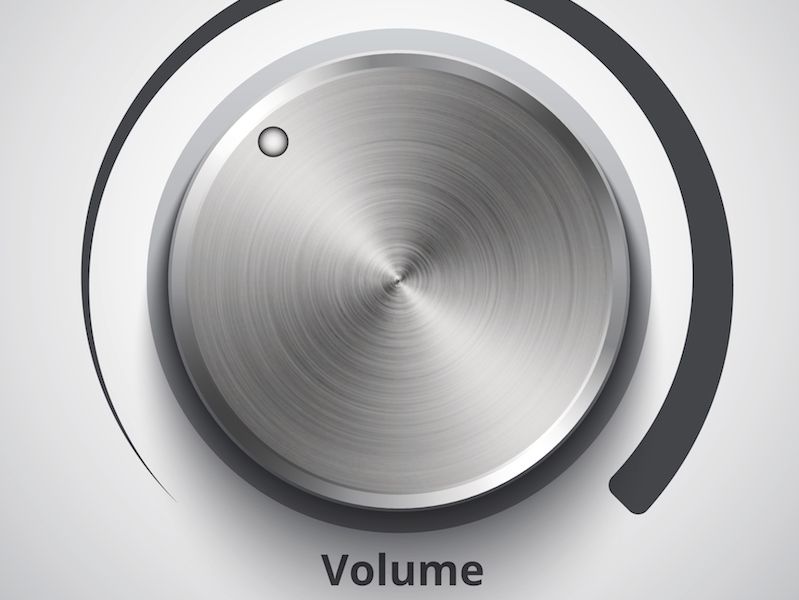
Have you ever gone to the beach and noticed one of those “Beware of Shark” signs? It’s not hard to realize that you shouldn’t dismiss a warning like that. A warning like that (especially if written in large, red letters) might even make you rethink your swim altogether. But people usually don’t pay attention to cautions about their hearing in the same way for some reason.
Current research has found that millions of individuals ignore warning signs when it comes to their hearing (this research exclusively looked at populations in the United Kingdom, but there’s no doubt the problem is more global than that). Awareness is a big part of the problem. Being afraid of sharks is rather instinctive. But the majority of people don’t have an overt fear of loud noises. And how do you recognize how loud is too loud?
Loud And Hazardous Sound is Everywhere Around us
Your hearing isn’t just in danger at a live concert or construction site (although both of those situations are, without a doubt, hazardous to your hearing). Many common sounds can be dangerous. That’s because it isn’t exclusively the volume of a sound that is dangerous; it’s also how long you’re exposed. Even low-level sounds, including dense city traffic, can be dangerous to your hearing if you are exposed for more than two hours.
Read on to find out when sound becomes too loud:
- 30 dB: Everyday conversation would be at this volume level. You should be just fine at this level for an indefinite period.
- 80 – 85 dB: An air conditioner, heavy traffic, and lawn equipment are at this volume. After around two hours this level of sound becomes damaging.
- 90 – 95 dB: A motorcycle is a practical example of this sound level. 50 minutes is enough to be dangerous at this level of sound.
- 100 dB: This is the level of noise you may encounter at a mid-size sporting event or an oncoming subway train (depending on the city, of course). 15 minutes of exposure will be enough to be harmful at this volume.
- 110 dB: Have you ever turned your Spotify music up to max volume? On most smartphones, that’s right around this level. 5 minutes will be enough to be harmful at this level.
- 120 dB and over: Anything over 120 dB (think loud rock show or extremely large sports events) can result in instant damage and pain in your ears.
How Loud is 85 dB?
Generally, you’re hearing is at risk when you’re experiencing any sound 85 dB or louder. The problem is that it isn’t always obvious just how loud 85 dB is. It’s not tangible in the way that a shark is tangible.
And hearing cautions often get neglected for this reason especially when the sound environment isn’t loud enough to cause pain. There are a couple of potential solutions to this:
- Suitable training and signage: This refers to workspaces, in particular. Signage and training can help reinforce the real risks of hearing loss (and the advantages of hearing protection). Signage could also let you know just how noisy your workplace is. Training can help employees know when hearing protection is required or suggested.
- Get an app: Your hearing can’t be immediately safeguarded with an app. But there are several free apps that can function as sound level monitors. Damage to your hearing can happen without you recognizing it because it’s hard to know just how loud 85 dB feels. Using this app to monitor sound levels, then, is the solution. This will help you develop a sense for when you’re entering the “danger zone” (Or, the app will simply tell you when things get too noisy).
When in Doubt: Protect
No app and no signage will ever be flawless. So if you’re in doubt, take the time to safeguard your hearing. Noise damage, over a long enough period of time, can bring about hearing loss. And nowadays, it’s never been easier to harm your ears (all you need to do is turn your earpods up a little too loud).
If you’re listening to headphones all day, you should not raise the volume past the mid-mark. You need noise cancellation headphones if you are constantly cranking up the volume to block out background sound.
That’s the reason why it’s more significant than ever to acknowledge when the volume becomes too loud. Increasing your own knowledge and awareness is the key if you want to do that. Safeguarding your ears, wearing ear protection, or limiting your exposure, is pretty simple. That begins with a little recognition of when you should do it.
That should be easier today, too. That’s even more accurate now that you have some insight.
Think you could have hearing loss? Make an appointment.
